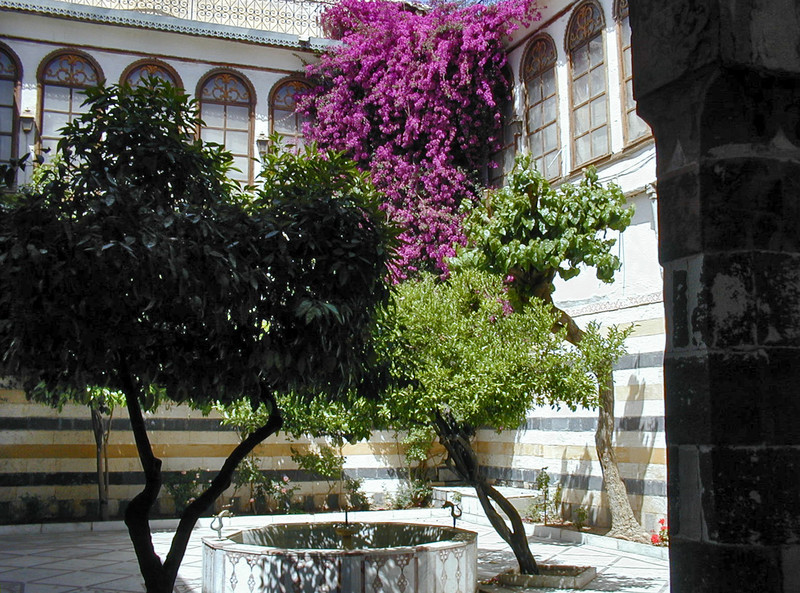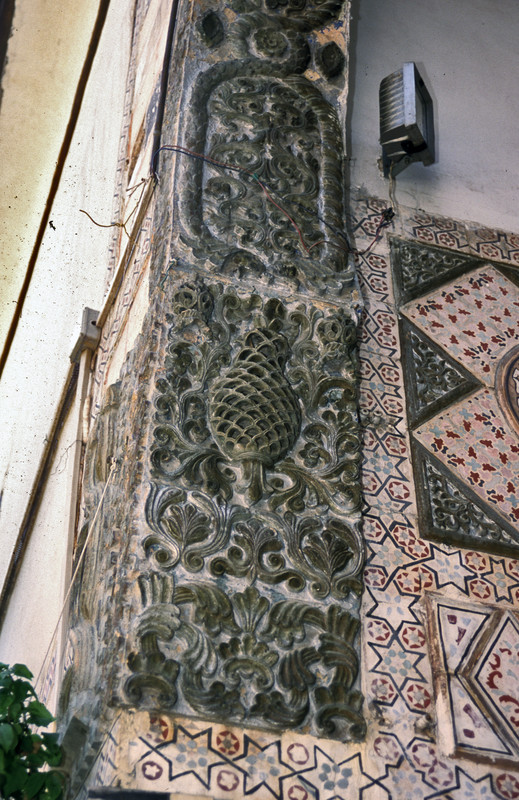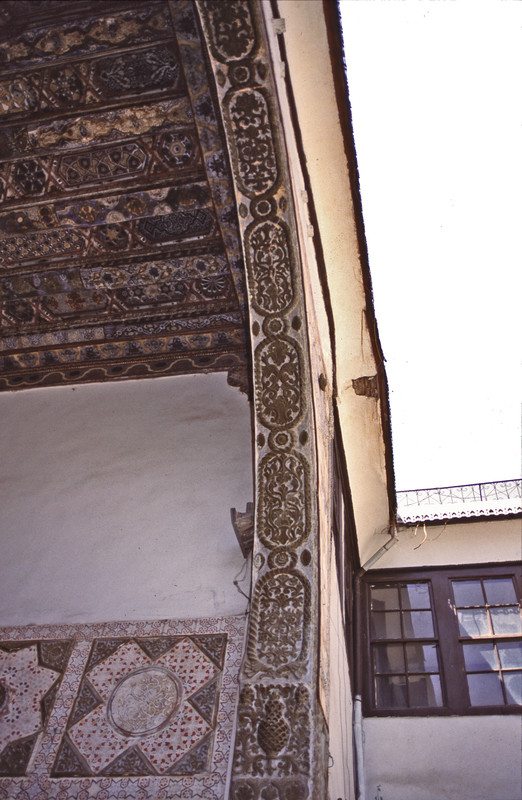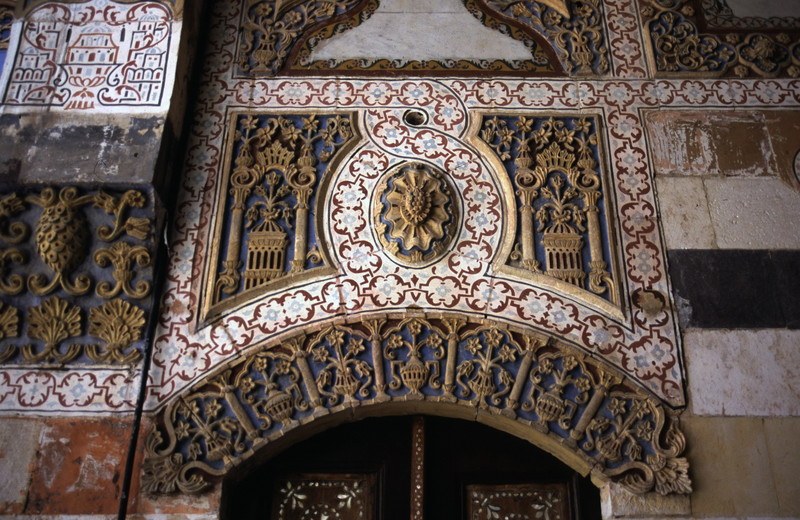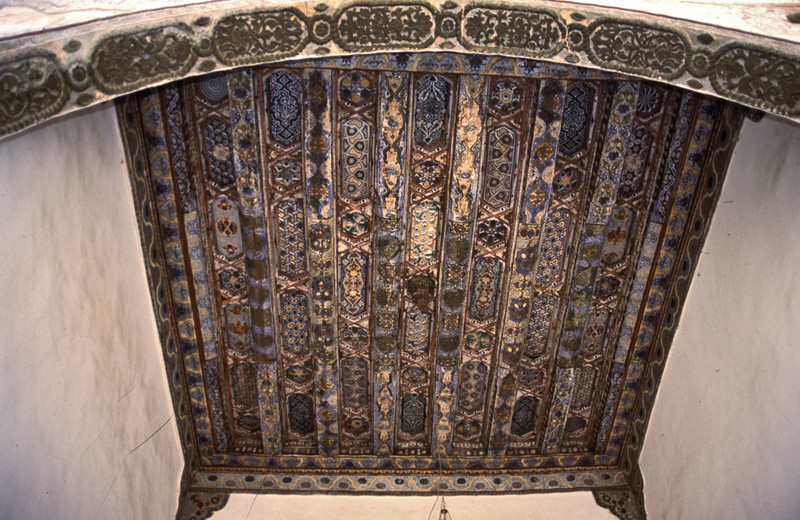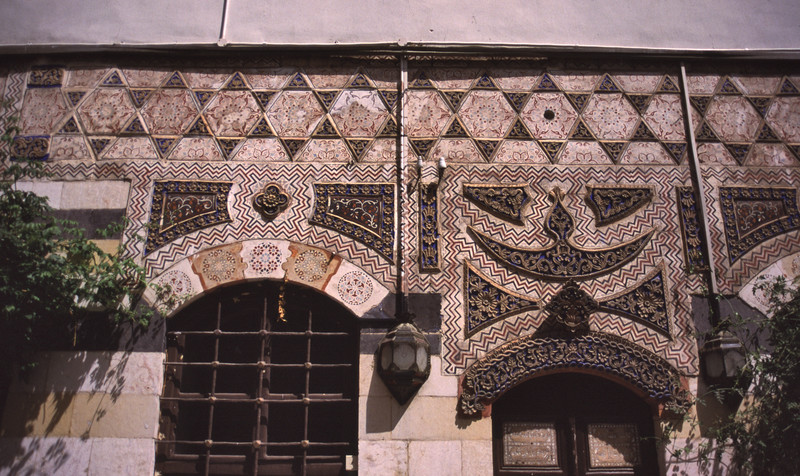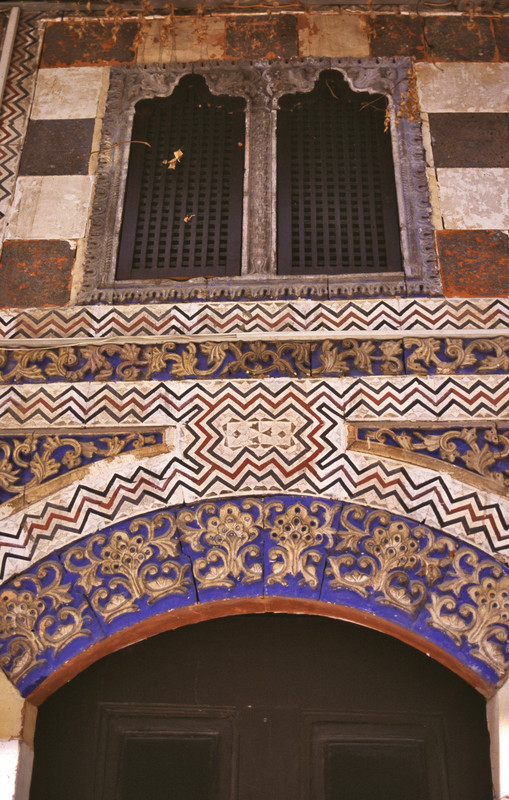Bayt Nizam is one of the finest restored palatial residences in Damascus, a lasting witness to the city’s heritage since the eighteenth century. Situated in the Shaghour district, in the alley of Minaret al-Sham‘, it owes its name to the Nizam family, the last residents to occupy and renovate it in the early twentieth century. By the mid-nineteenth century, the house served as the headquarters of the British Consulate in Syria. In 1974, it was designated a historical monument and opened to the public.
Bayt Nizam stands in the alley of Minaret al-Sham‘, within the Shaghour neighborhood, not far from the end of Medhat Pasha Street. It is bordered by Nasif Pasha Street to the west, Tellat al-Samaka Lane to the east, and Zaqaq Nasif Pasha to the south.
The precise origins of the house remain unknown, though the oldest recorded date inscribed on one of its interior walls is 1172 AH / 1760 CE, considered the probable year of its construction.
The true builder of Bayt Nizam is also unknown. It was named after the Nizam al-Din family, who occupied it during the first half of the twentieth century. The house witnessed the era of Ibrahim Pasha and served as the British Consulate until 1883. It was later home to the al-Qweidhi family until 1926, followed by the Qabbani and Abbas families, and finally the Nizam family, whose descendants oversaw its restoration. Bayt Nizam is a prime example of the opulent Damascene palaces that flourished during the eighteenth and nineteenth centuries, all adhering to a shared architectural tradition.
The house was acquired by the Damascus Municipality in 1974, and restoration began in 1987, culminating in its formal inauguration in 1994.

